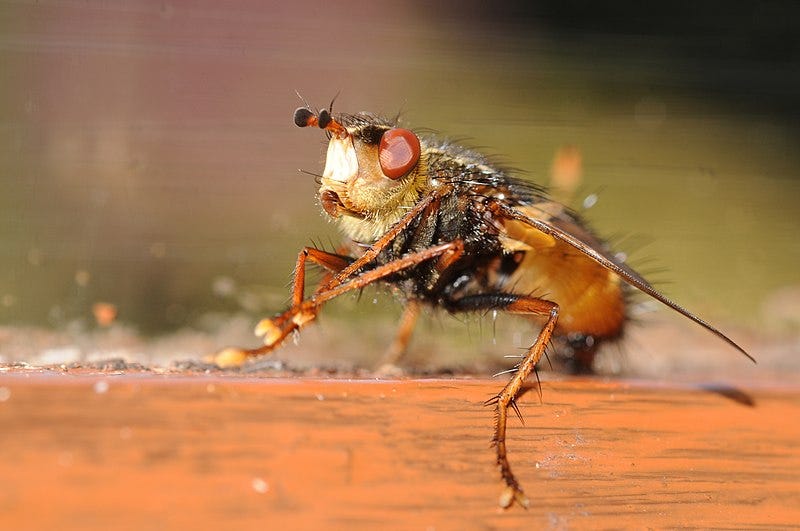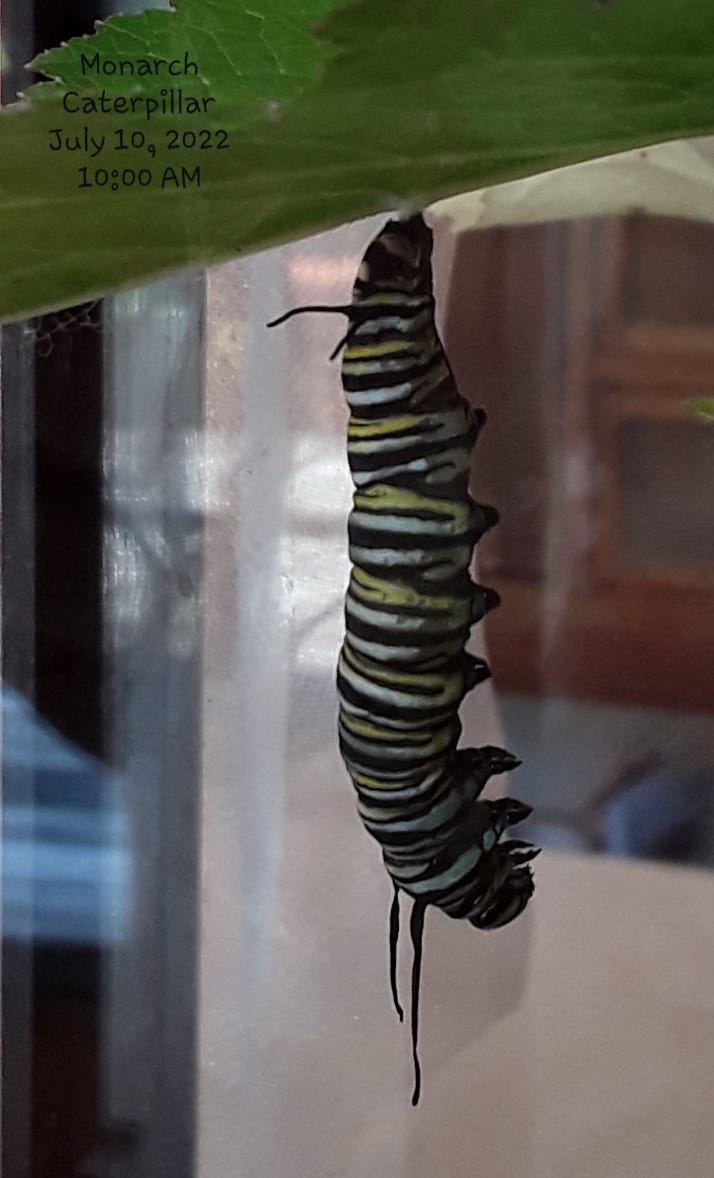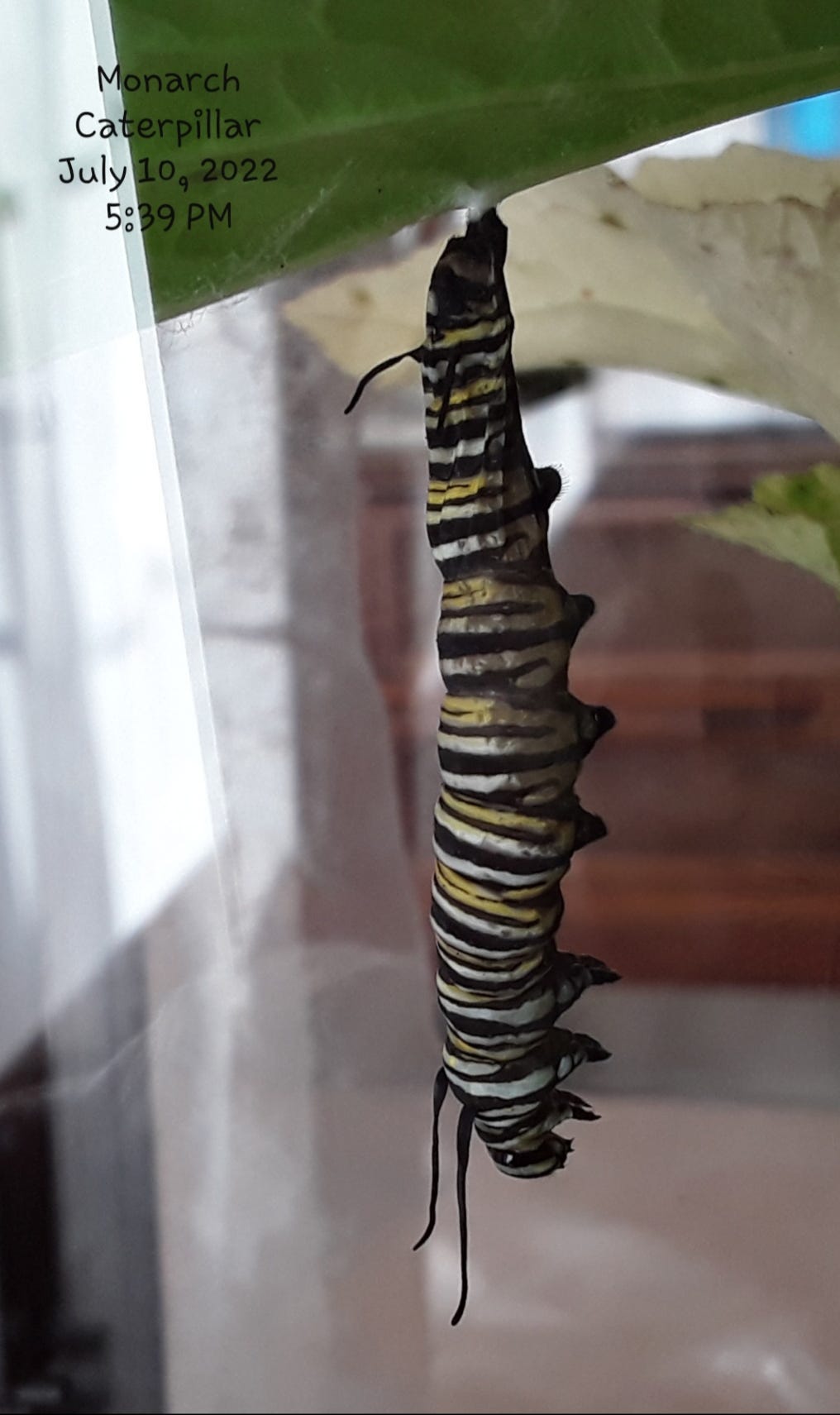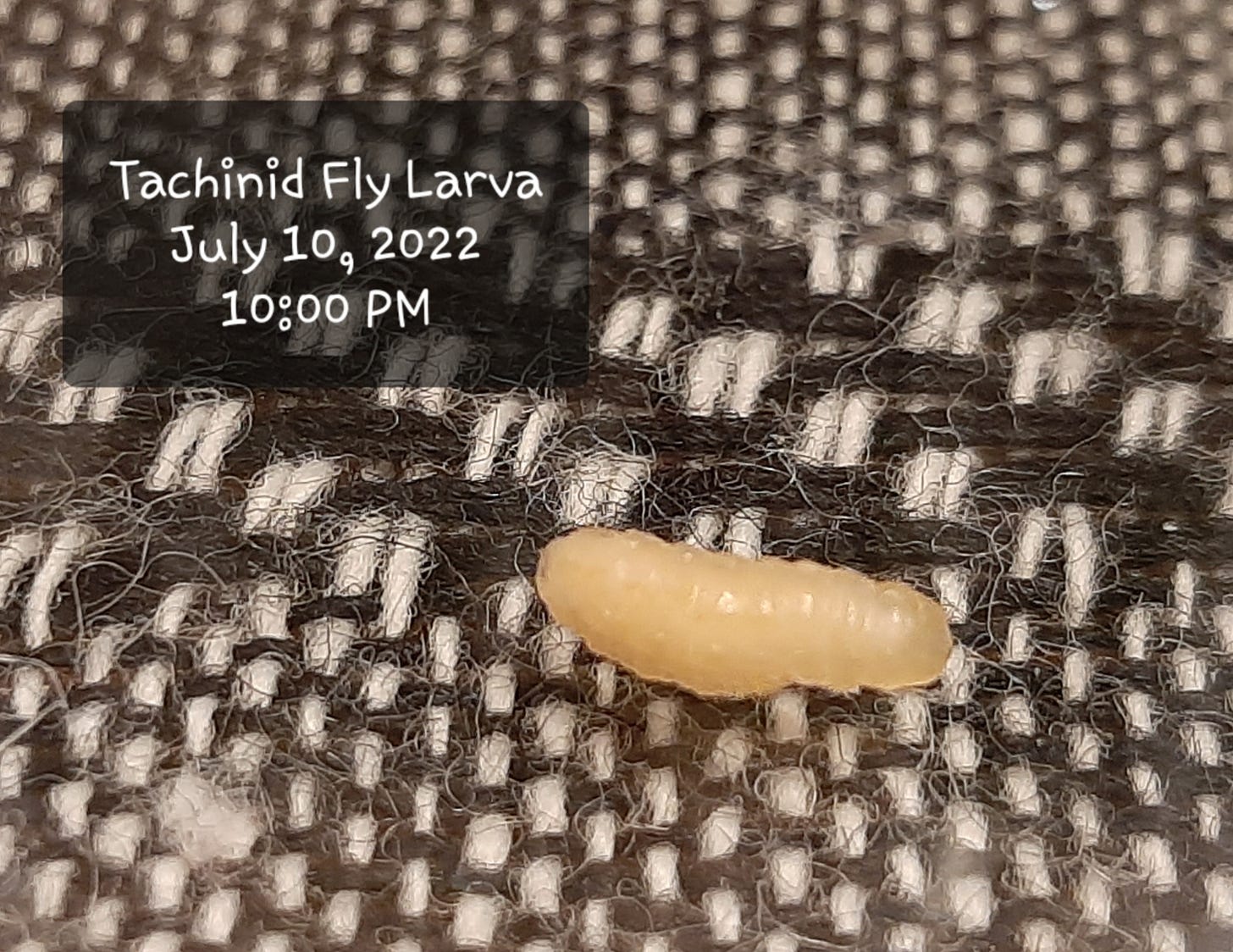I love insects. As a child, my very patient, long suffering parents allowed me to bring all kinds of six-legged creatures into the house to study, including caterpillars. I remember raising black tailed swallowtail butterflies (who enjoyed carrot greens and parsley), tiger swallowtail butterflies (who feasted on wild cherry leaves), and I was even allowed to raise a tomato hornworm once - but only once (tomato hornworms grow up to become sphinx moths, beautiful critters who look remarkably like hummingbirds; plus the caterpillars bury themselves before pupating: how cool is that?).
Of all the wonderful insects I've met, the monarch butterfly has always been my favorite. I happily captured, raised, and released a batch of monarchs every summer. They are not only beautiful, but are amazing travelers. Every fall they fly from the northern states all the way down to Mexico (up to 2500 miles!). In the spring, they return to their northern breeding grounds, though the springtime trekkers only complete part of the trip back north - they stop to lay eggs and die as they go, with their descendants completing the return trip through three to four generations. I am still mystified by their ability to hatch out in a strange place and somehow know that they need to fly just a little further north. I just love monarch butterflies.
So when I found a monarch caterpillar getting ready to pupate on a weed that I’d just pulled while tending the flowerbed, I was thrilled. He was already attached to a leaf, in the characteristic "J" shape that indicates that metamorphosis is imminent. I was thrilled! I set up an aquarium for him and started taking pictures to document the magical transformation from caterpillar to chrysalis to butterfly.
The pupation should have taken about 24 hours - as the 24 hour mark approached, I began to realize that something was seriously wrong. Instead of shedding his beautifully striped skin to complete the transform into a green and gold chrysalis, my poor caterpillar seemed to be shriveling away. What happened? Did it begin to pupate too early in the season? Did I accidentally hurt it when I pulled up the plant it had anchored itself to? Was it simply sick? I had no idea that the truth would turn out to be something right out of a H. P. Lovecraft novel...
Almost 30 hours into the pupation, I noticed two small white maggots crawling around the bottom of the aquarium, while a third rappelled down a white string-like substance suspended from the body of the now obviously deceased caterpillar. I was both fascinated and disgusted. A bit of research revealed that these horrid little beasts were larval tachinid flies. These parasites lay eggs on young caterpillars - when the tachinid fly larvae hatch, they burrow into their victim and live in and on their host until they are ready to pupate - coincidentally about the same time that their host plans to do the same - at which point they emerge from the hapless caterpillar. This is what happened to my poor monarch.
I'm beginning to wonder if one of my neighbors may have released tachinid flies into their gardens. Tachinid flies are often used as an effective organic pest control, as they are able to kill off "…gypsy moths, cabbage worms, Japanese beetles, armyworms, cutworms, sawflies, codling moths, peach twig borers, pink bollworms, tent caterpillars, leafrollers and squash bugs." (Pleasant, 2013, para. 3). I've noticed a distinct lack of insect pests in the yard this year - so far, I’ve only spotted a couple of stinkbugs, no Japanese beetles, no spongy moths (formerly known as gypsy moths), no tomato hornworms. I don't want to look a gift horse in the mouth, but tachinid flies don't discriminate between the cabbage worm busily rendering your crop of lovely broccoli into an inedible mess and the beautiful, etherial monarch butterflies, swallowtails, and Luna moths fluttering about your flower bed. It is estimated that tachinid larvae kill off 10% to 40% of the wild monarch larval population. A single caterpillar can be the unwitting host to as many as eight of these demonic creatures - my caterpillar’s body hosted four. I believe that organic pest control is generally a good thing, but we should probably beware the unintended consequences.

I am not giving up hope! The monarch season has just begun and my yard is ready to host them, well stocked with the monarch butterfly's two favorite egg laying plants: Asclepias incarnata, the swamp milkweed, a beautiful self-seeding perennial that is merrily taking over my flower bed (I may need to move some of them elsewhere, they are enthusiastic growers!) and Asclepias syriaca, the common milkweed, huge masses of which live at the edges of the back yard (which I carefully avoid during weed whacking duty). There will be more caterpillars, and hopefully these will escape the ravages of the tachinid fly, their most dangerous foe.
If you would like to see how things were supposed to turn out, watch this time lapse video of monarch caterpillar changing over to a chrysalis provided by the U.S. Fish & Wildlife Service:
I'm hoping for better luck next time!
Sources:
Butterfly Farms, Monarch Predators Parasite and Diseases. https://www.butterflyfarms.org/monarch-predators-parasites-and-diseases/. Accessed 10 July, 2022.
Pleasant, Babara, The Tachinid Fly: A Parasitic Fly With Pest-Control Potential. Mother Earth News, Organic Pest Control Series, 18 Mar, 2013. https://www.motherearthnews.com/organic-gardening/attract-parasitic-tachinid-fly-zw0z1303zkin/. Accessed 11 July, 2022.
Rose Franklin's Perennials. Monarch Life Cycle, Monarchs-and-Milkweed.com, 11 Feb, 2018. http://www.monarchs-and-milkweed.com/Monarch%20Life%20Cycle.htm. Accessed 9 July 2022.
Suszkiw, Jan. Which Milkweeds Do Monarch Butterflies Prefer?, U.S. Department of Agriculture, Agricultural Research Service. https://tellus.ars.usda.gov/stories/articles/which-milkweeds-do-monarch-butterflies-prefer/. Accessed 10 June, 2022.
United States Department of Agriculture. Monarch Butterfly Migration and Overwintering, U. S. Foresty Service. https://www.fs.fed.us/wildflowers/pollinators/Monarch_Butterfly/migration/. Accessed 10 July, 2022.
United States Fish and Wildlife Service. (21 August 20, 2015). Monarch Caterpillar Changing to Chrysalis [Video]. YouTube. Accessed 9 July, 2022.
Watt, Liz, The great monarch migration - A unique phenomenon under threat. World Wildlife Federation, 16 Mar, 2021. https://www.worldwildlife.org/stories/the-great-monarch-migration#:~:text=Flying%20up%20to%202%2C500%20miles,known%20species%20of%20their%20kind. Accessed 10 July 2022.















Share this post